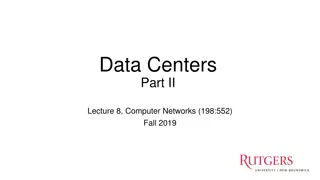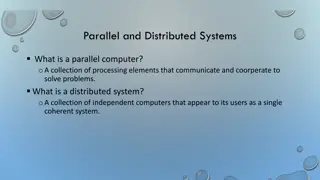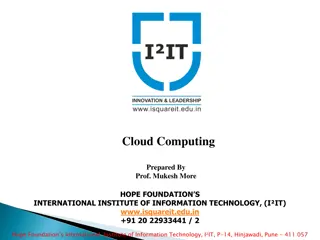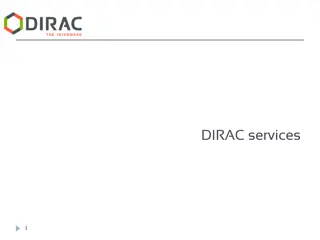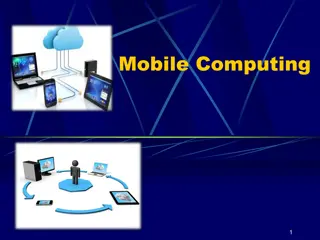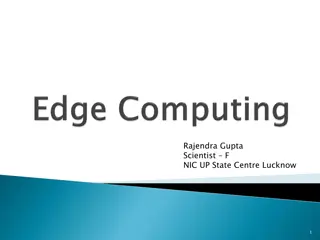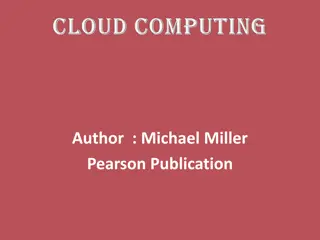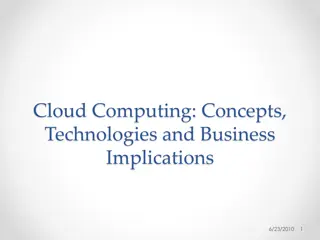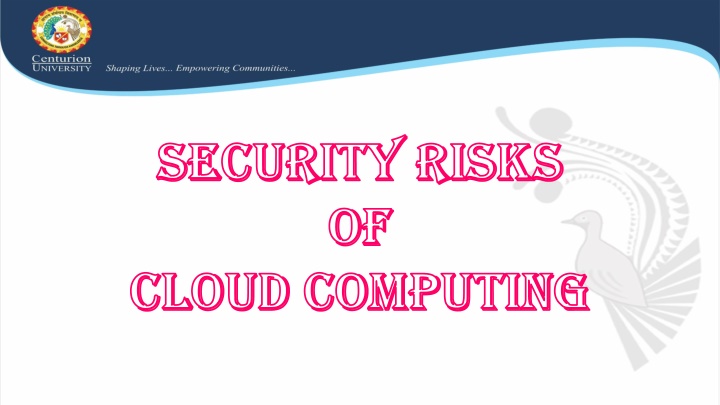
Top Security Risks of Cloud Computing Unveiled
Discover the prevalent security risks associated with cloud computing, including data loss, hacked interfaces, data breaches, vendor lock-in, and more. Learn how these risks can impact your organization's data security and what measures to take to mitigate them effectively.
Download Presentation

Please find below an Image/Link to download the presentation.
The content on the website is provided AS IS for your information and personal use only. It may not be sold, licensed, or shared on other websites without obtaining consent from the author. If you encounter any issues during the download, it is possible that the publisher has removed the file from their server.
You are allowed to download the files provided on this website for personal or commercial use, subject to the condition that they are used lawfully. All files are the property of their respective owners.
The content on the website is provided AS IS for your information and personal use only. It may not be sold, licensed, or shared on other websites without obtaining consent from the author.
E N D
Presentation Transcript
Security Risks Security Risks of of Cloud Computing Cloud Computing
Cloud computing provides various advantages, such as improved collaboration, excellent accessibility, Mobility, Storage capacity, etc. But there are also security risks in cloud computing. Some most common Security Risks of Cloud Computing are given below- a) Data Loss - Data loss is the most common cloud security risks of cloud computing. It is also known as data leakage. Data loss is the process in which data is being deleted, corrupted, and unreadable by a user, software, or application. In a cloud computing environment, data loss occurs when our sensitive data is somebody else's hands, one or more data elements can not be utilized by the data owner, hard disk is not working properly, and software is not updated.
b) Hacked Interfaces and Insecure APIs As we all know, cloud computing is completely depends on Internet, so it is compulsory to protect interfaces and APIs that are used by external users. APIs are the easiest way to communicate with most of the cloud services. In cloud computing, few services are available in the public domain. These services can be accessed by third parties, so there may be a chance that these services easily harmed and hacked by hackers. c) Data Breach Data Breach is the process in which the confidential data is viewed, accessed, or stolen by the third party without any authorization, so organization's data is hacked by the hackers.
d) Vendor lock-in - Vendor lock-in is the of the biggest security risks in cloud computing. Organizations may face problems when transferring their services from one vendor to another. As different vendors provide different platforms, that can cause difficulty moving one cloud to another. e) Increased complexity strains IT staff - Migrating, integrating, and operating the cloud services is complex for the IT staff. IT staff must require the extra capability and skills to manage, integrate, and maintain the data to the cloud. f) Spectre & Meltdown - Spectre & Meltdown allows programs to view and steal data which is currently processed on computer. It can run on personal computers, mobile devices, and in the cloud. It can store the password, your personal information such as images, emails, and business documents in the memory of other running programs.
g) Denial of Service (DoS) attacks - Denial of service (DoS) attacks occur when the system receives too much traffic to buffer the server. Mostly, DoS attackers target web servers of large organizations such as banking sectors, media companies, and government organizations. To recover the lost data, DoS attackers charge a great deal of time and money to handle the data. h) Account Hijacking - Account hijacking is a serious security risk in cloud computing. It is the process in which individual user's or organization's cloud account (bank account, e- mail account, and social media account) is stolen by hackers. The hackers use the stolen account to perform unauthorized activities.
Conclusion Conclusion This article follows the present scenario of the world education system as well as various business organizations based on cloud computing. Most of the organizations providing their education in the cloud by using different education platforms. Employs are doing their job from home by using cloud computing. Cloud computing provides various platforms for the different aspects to fulfil their needs. It is very helpful to express their business progress easily and securely. If you are analyse about e- learning platform in the cloud, it helps with the user to continue their distance learning classes and doing some part time job. It is customised for the higher education system and engineering. It provides online classes for lab infrastructure, collaborative research works, and project based research. Due to the cloud computing most of the e- learning service providers can easily set up their labs and to create proper learning environments. This is helpful for business organizations to grow their business by using proper cloud platforms. The advantage of cloud computing is cost effective, we can access our data from the cloud securely from anywhere and anytime.


